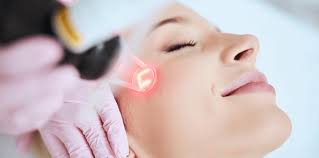The Benefits of Laser Resurfacing: A Guide to Radiant Skin
Laser resurfacing has become a popular choice for individuals looking to achieve smoother, more youthful-looking skin. This non-surgical cosmetic procedure utilizes laser technology to address various skin concerns and improve overall skin texture and tone. In this guide, we will explore the benefits of laser resurfacing and provide you with valuable information to help you make an informed decision about this innovative treatment.
1. Introduction to Laser Resurfacing:
Laser resurfacing is a cosmetic procedure that uses laser technology to improve the appearance of the skin. It targets various skin concerns such as wrinkles, fine lines, acne scars, sun damage, and uneven skin tone. By removing damaged outer layers of the skin, laser resurfacing stimulates the production of collagen, resulting in smoother, more youthful-looking skin.
2. How Does Laser Resurfacing Work?
Laser Skin Resurfacing in Dubai works by emitting a concentrated beam of light that precisely targets specific areas of the skin. The laser energy penetrates the skin's surface, removing damaged skin cells and stimulating the production of new collagen fibers. The process helps to resurface the skin, reducing the appearance of imperfections and promoting a more even skin tone.

3. Benefits of Laser Resurfacing:
Laser resurfacing offers numerous benefits for individuals seeking skin rejuvenation. Some of the key advantages include:
Reduction of wrinkles and fine lines: Laser resurfacing helps to minimize the appearance of facial wrinkles and fine lines, giving the skin a smoother, more youthful appearance.
Improvement of skin texture and tone: The procedure helps to even out skin texture, reducing the appearance of roughness, acne scars, and sun damage.
Stimulation of collagen production: Laser resurfacing stimulates the production of collagen, a protein that gives the skin its firmness and elasticity. This leads to long-term improvements in skin quality.
Enhanced skin radiance: By removing damaged skin cells and promoting skin cell turnover, laser resurfacing reveals a fresh, glowing complexion.
4. Types of Laser Resurfacing Treatments:
There are two primary types of laser resurfacing treatments: ablative and non-ablative.
Ablative laser resurfacing: This treatment removes the outer layers of the skin, reaching deeper layers to promote collagen production and address more significant skin imperfections. It is effective for treating deep wrinkles, scars, and sun damage.
Non-ablative laser resurfacing: This treatment targets the deeper layers of the skin without removing the outer layers. It stimulates collagen production and is suitable for individuals with milder skin concerns.
Your healthcare provider will determine the most appropriate type of laser resurfacing based on your specific needs and skin condition.
5. Choosing a Qualified Professional:
When considering laser resurfacing, it is crucial to choose a qualified professional with expertise in performing the procedure. Consider the following factors when selecting a healthcare provider:
Credentials and experience: Ensure that the provider has the necessary qualifications and experience in performing laser resurfacing.
Reviews and testimonials: Read reviews and testimonials from previous patients to gauge the provider's reputation and patient satisfaction.
Before and after photos: Request to see before and after photos of previous patients to assess the quality of their work.
Facility accreditation: Ensure that the facility where the procedure will be performed is accredited and meets the necessary safety standards.
6. Preparing for Laser Resurfacing:
Before undergoing laser resurfacing, it is essential to follow specific pre-treatment instructions provided by your healthcare provider. These may include:
Avoiding sun exposure: Limit your sun exposure and use sunscreen to protect your skin.
Discontinuing certain medications: Inform your healthcare provider about any medications or supplements you are taking, as some may interfere with the procedure.
Skincare routine adjustments: Your healthcare provider may recommend specific skincare products or treatments to prepare your skin for the procedure.
7. The Laser Resurfacing Procedure:
The laser resurfacing procedure is typically performed in a medical setting, such as a dermatologist's office or a cosmetic surgery clinic.
Anesthesia: Depending on the depth and intensity of the treatment, your healthcare provider may apply a local anesthetic or provide sedation to ensure your comfort during the procedure.
Laser treatment: The laser is precisely applied to the targeted areas of the skin, emitting controlled energy to remove damaged skin cells and stimulate collagen production.
Cooling and post-treatment care: After the procedure, a cooling ointment or dressing may be applied to soothe the skin and aid in the healing process. Your healthcare provider will provide specific post-treatment instructions for optimal recovery.
8. Recovery and Aftercare:
After laser resurfacing, you can expect a recovery period during which your skin will heal and regenerate. Follow these aftercare guidelines:
Protect your skin: Avoid sun exposure and wear sunscreen daily to protect your newly resurfaced skin.
Moisturize: Keep your skin hydrated with gentle, non-irritating moisturizers recommended by your healthcare provider.
Follow post-treatment instructions: Adhere to the post-treatment instructions provided by your healthcare provider, including any prescribed medications or skincare products.
9. Long-Term Results and Maintenance:
The long-term results of laser resurfacing depend on several factors, including the specific treatment performed, individual skin characteristics, and post-treatment care. With proper maintenance, including a consistent skincare routine and sun protection, the results of laser resurfacing can last for several years. Periodic maintenance treatments may be recommended to sustain the desired results.
10. Potential Risks and Side Effects:
Although laser resurfacing is generally safe, it is essential to be aware of potential risks and side effects, including:
Temporary redness and swelling: It is common to experience temporary redness and swelling immediately after the procedure, which typically resolves within a few days.
12. Conclusion:
Laser resurfacing is an effective and versatile cosmetic procedure that offers numerous benefits for individuals seeking smoother, more radiant skin. By targeting various skin concerns and stimulating collagen production, laser resurfacing can help you achieve a more youthful and rejuvenated appearance.